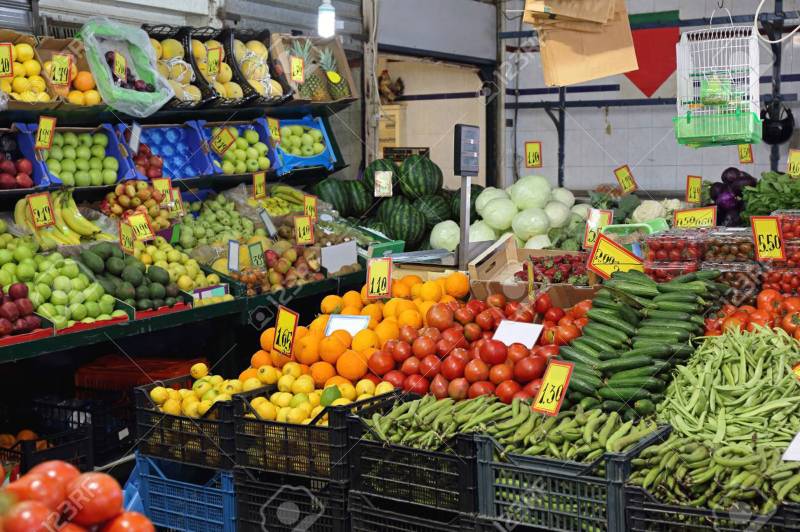ISLAMABAD - Inflation has recorded at 8.91 per cent in the month of October mainly due to increase in prices of commodities in last month.
Inflation measured through Consumer Price Index (CPI) has recorded at 8.91 per cent in October this year over the same period of last year, according to the latest data of Pakistan Bureau of Statistics (PBS). It has shown slight decline as compared to 9.04 per cent in the preceding month (September). Inflation is one of the major challenges for the government, as prices of basic commodities are increasing. The ministry of finance has recently termed inflation as one of the main challenges. The International Monetary Fund (IMF) has estimated Pakistan’s inflation rate in double digits at 10.2 per cent during the current fiscal year. The pace of inflation is skyrocketing at a time when the economic activity, both in the formal as well as informal sectors, is slowing down, which has made it difficult for the people to cope with the situation. However, the ministry of finance said that the government is taking all possible measures to control it. Together with measures that ensure sufficient supply of goods, especially food related production, it is expected that inflation will remain under control whereas policy measures will contribute to better functioning markets.
According to the PBS data, the CPI based inflation has recorded at 8.86 per cent in first four months (July to October) of the current fiscal year. Meanwhile, the Sensitive Price Indicator (SPI), which gauges rates of kitchen items on weekly basis, increased by 12.43 per cent. Similarly, the wholesale price index (WPI) based inflation enhanced by 3.98 per cent in the period under review.
The break-up of inflation of 8.91 per cent in October 2020 showed that food and non-alcoholic beverages prices increased by 16.58 per cent. Similarly, health and education charges went up by 7.82 per cent and 1.38 per cent, respectively. Similarly, prices of utilities (housing, water, electricity, gas and fuel) increased by 2.73 per cent in last the month. Meanwhile, the prices of alcoholic beverages and tobacco went up by around 5.97 per cent. Price of clothing and footwear increased by 8.96 per cent and furnishing and household equipment maintenance charges 7.99 per cent. Recreational charges and those related to culture went up by 3.94 per cent in the period under review, while amounts charged by restaurants and hotels by 8.98per cent in October 2019 as compared to the same month last year.
In urban areas, the food items which saw their price increased during October 2020 included: tomatoes (48.36 per cent), onions (39.07 per cent), chicken (26.62 per cent), eggs (23.81 per cent), wheat (8.39 per cent), wheat products (8.07 per cent), sugar (4.58 per cent), wheat flour (4.1 per cent), besan (2.89 per cent), pulse moong (1.69 per cent), rice (1.45 per cent), pulse mash (1.26 per cent), readymade food (0.98 per cent), gram whole (0.85 per cent), pulse masoor (0.85 per cent), potatoes (0.82 per cent), pulse gram (0.81 per cent) and butter (0.78 per cent).
Meanwhile, in urban areas, following commodities prices showed decline fresh vegetables (6.36 per cent), fresh fruits (3.31 per cent) and condiments & spices (2.39 per cent)
In rural areas, the commodities which prices enhanced included tomatoes (64.99 per cent), onions (58.39 per cent), eggs (24.88 per cent), chicken (23.14 per cent), wheat (5.54 per cent), sugar (4.89 per cent), fresh vegetables (4.06 per cent), fresh fruits (3.5 per cent), wheat flour (3.28 per cent), wheat products (3.07 per cent), potatoes (3.05 per cent), pulse masoor (2.97 per cent), Dry fruits (2.73 per cent), Honey (2.5 per cent), Fish (2.38 per cent), Bakery and Confectionary (2.38 per cent), Meat (1.76 per cent), Pulse Mash (1.6 per cent) and Cooking oil (1.47 per cent).






